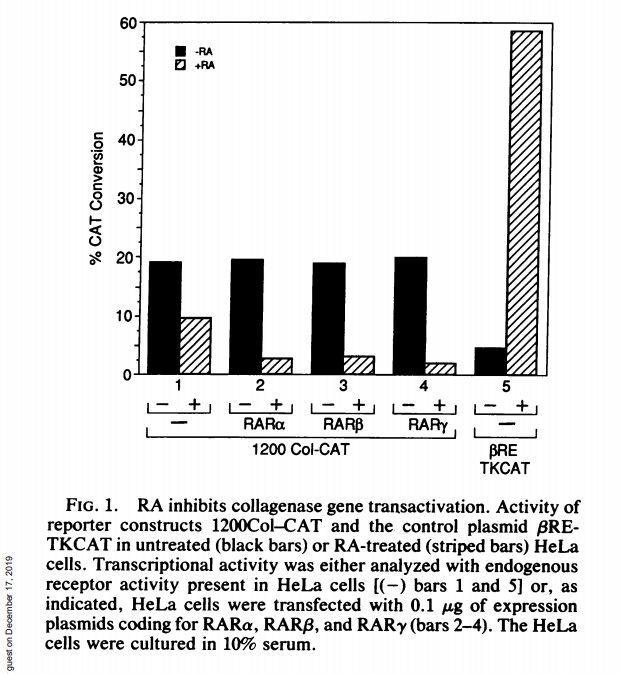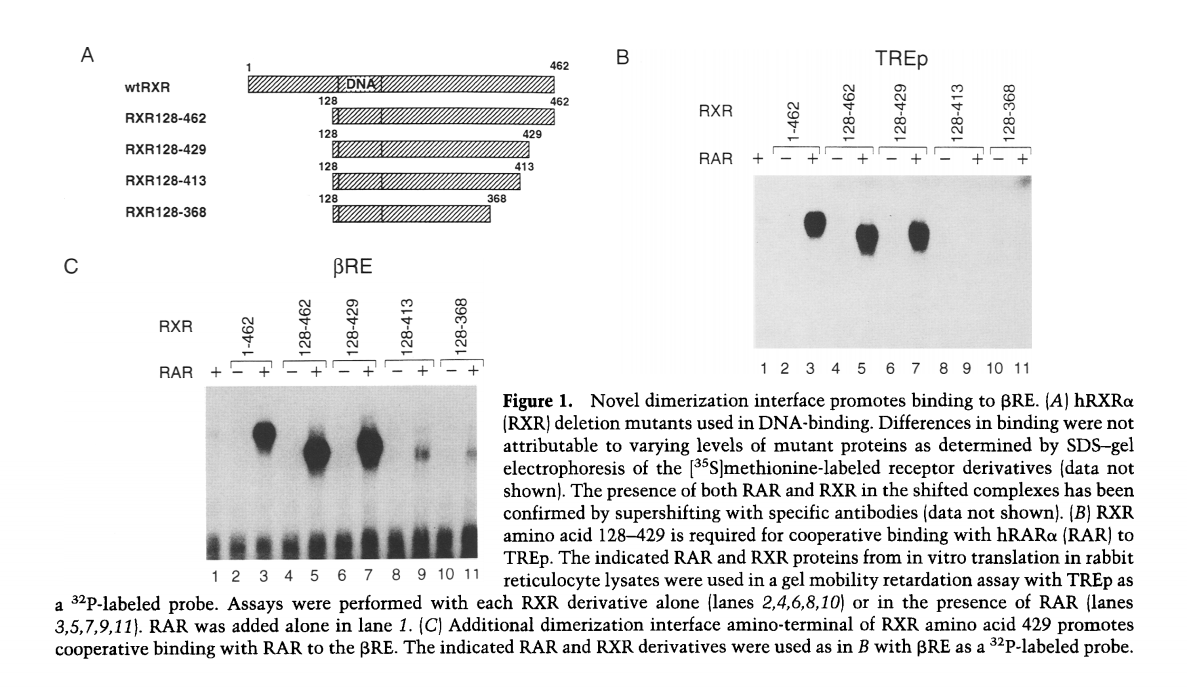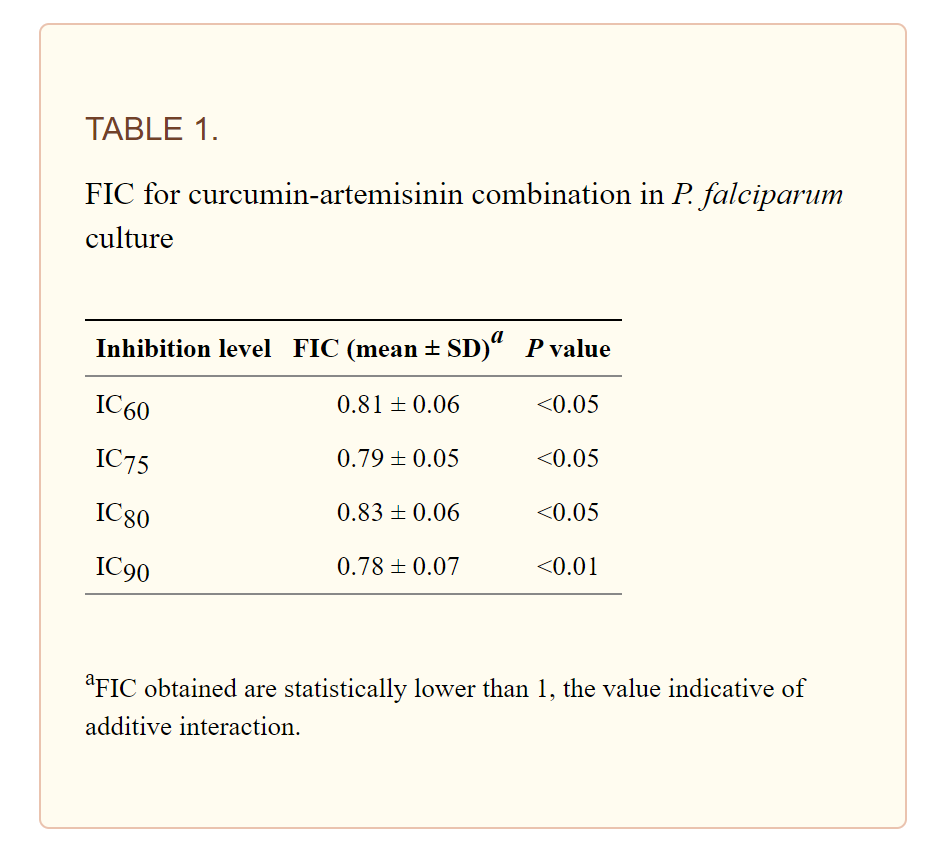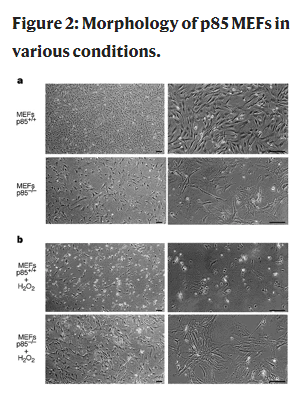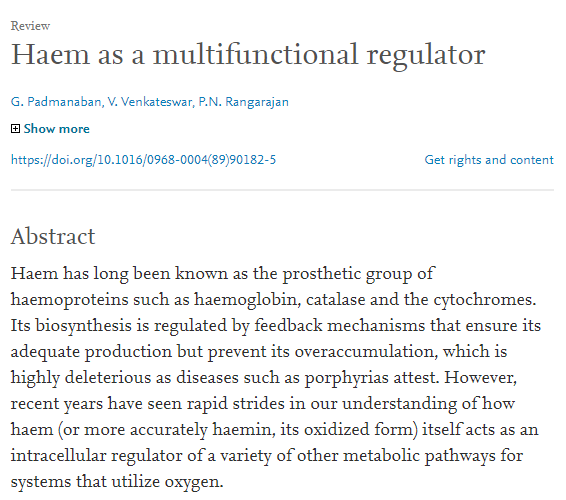Retinoic acid is a negative regulator of AP-1-responsive genes
We present evidence that retinoic acid can down-regulate transcriptional activation by the nuclear protooncogene c-jun. All three members of the retinoic acid receptor (RAR) subfamily (RAR alpha, RAR beta, and RAR gamma) can repress transcriptional induction of the human collagenase gene or a heterologous promoter that...
Determinants for selective RAR and TR recognition of direct repeat HREs.
Recently, we have shown that receptors for vitamin D3 (VDR), thyroid hormone (TR), and retinoic acid (RAR) activate preferentially through direct repeats (DRs) spaced by 3, 4, and 5 nucleotides, respectively. In addition, the RAR can activate weakly through DRs spaced by 2 nucleotides. A common feature of RAR, TR, and ...
Curcumin for malaria therapy
Malaria remains a major global health concern. New, inexpensive, and effective antimalarial agents are urgently needed. Here we show that curcumin, a polyphenolic organic molecule derived from turmeric , inhibits chloroquine-resistant Plasmodium falciparum growth in culture in a dose dependent manner with an IC 50 of 5...
Involvement of p85 in p53-dependent apoptotic response to oxidative stress
Reactive oxygen species have damaging effects on cellular components and so trigger defensive responses by the cell 1 , 2 and even programmed cell death 3 , 4 , although the mechanisms by which mammalian cells transmit signals in response to oxidative damage are unknown. We report here that the protein p85, a regulator...
Haem as a multifunctional regulator
Haem has long been known as the prosthetic group of haemoproteins such as haemoglobin, catalase and the cytochromes. Its biosynthesis is regulated by feedback mechanisms that ensure its adequate production but prevent its overaccumulation, which is highly deleterious as diseases such as porphyrias attest. However, rece...




